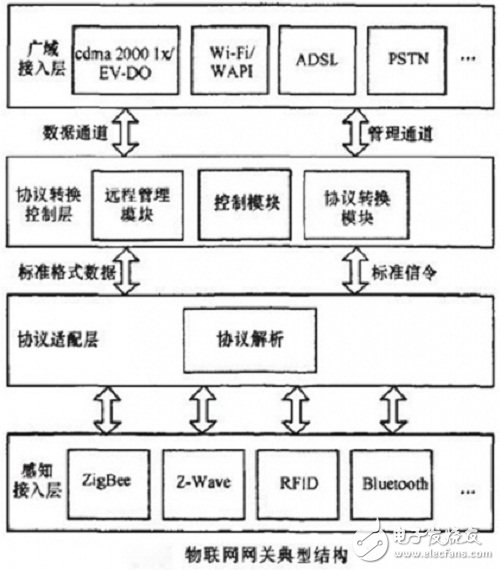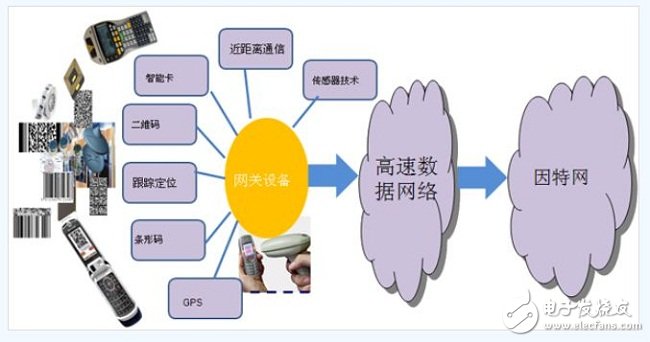Following the rise of computers and the Internet, the rise of the Internet of Things has set off the third wave of the development of the world's information industry. The Internet of things is an important part of the new generation of information technology. It can be seen as an upgrade and expansion of the Internet. According to the definition of the International Telecommunication Union (ITU), the Internet of Things mainly solves items and objects (Thing to Thing, T2T), the interconnection between Human to Thing (H2T) and Human to Human (H2H). Information exchange and communication through the extension and extension of the Internet to any item and item. In short, the Internet of Things is the Internet of Things. The IoT architecture can be divided into three layers: the sensing layer, the network layer, and the application layer. The key technology of the connection sensing layer and the network layer is the Internet of Things gateway. In the Internet of Things era, IoT gateways will be a crucial part.

IoT Gateway Concept
As the link between the connection sensing layer and the network layer, the IoT gateway can realize the protocol conversion between the sensing network and the communication network, and between different types of sensing networks. Can achieve wide area interconnection. Local area interconnection can also be implemented. In the wireless sensor network, the IoT gateway is an indispensable core device. In addition, the IoT gateway needs to have the device management function. The operator can manage the underlying sensing nodes through the IoT gateway device, understand the related information of each node, and realize remote control.
The shape of the IoT gateway
From the definition of IoT gateway, the IoT gateway is difficult to appear in a relatively fixed form. Generally speaking, any device that can transmit information collected by the sensing layer to the Internet through the protocol conversion of the terminal can be regarded as an IoT gateway. The shape can be a box shape or a tablet computer, and can have an interactive form of a display screen, or a closed or semi-closed non-interactive form.
IoT Gateway Key Technologies
1. Multi-standard interworking access capability: There are many technical standards currently used for short-range communication. Common sensor network technologies include ZigBee, Z-Wave, RUBEE, WirelessHART, IETF6IowPAN, AM'/ANrr+, Wibree,]nSTeON, and others. Various technologies are mainly developed for a certain type of application, and there is a lack of compatibility and system planning. For example, Z.Wave is mainly used in wireless intelligent home networks, RUBEE is suitable for harsh environments, and WirelessHART is mainly concentrated in industrial monitoring. Realizing the interconnection and intercommunication of various communication technology standards has become a problem that the Internet of Things gateway must solve. A separate gateway is designed for each standard, and then implemented through a unified interface between the gateways. Or use the standard adaptation layer, different technical standards to develop the corresponding interface implementation.

2. Manageability of the gateway: The IoT gateway acts as a network element connected to the network, and must have certain management functions, including registration login management, rights management, task management, data management, fault management, status monitoring, and remote diagnosis. , parameter query and configuration, event processing, remote control, remote upgrade, etc. If you need to implement the management of the entire network, you must not only manage the gateway device itself, but also implement the management of each node in the subnet through the gateway, such as obtaining the identity, status, attributes, etc. of the node, as well as remote wake-up, control, and Diagnosis, upgrade maintenance, etc. Although different according to the technical standards of the subnet. The complexity of the protocol is different, and the management content that can be performed is quite different.
IoT gateway application direction
Where there is an IoT application, there must be an IoT gateway. Through the connection of sensors, radio frequency (RFID), micro-electro-mechanical systems (MEMS), and intelligent embedded terminals, IoT gateways will be used in intelligent transportation, environmental protection, government work, public safety, safe home, intelligent fire protection, and industrial Monitoring, environmental monitoring, street lighting control, landscape lighting control, building lighting control, square lighting control, elderly care, personal health, flower cultivation, water monitoring, food traceability, enemy investigation and intelligence gathering. The protocols and gateways used by IoT gateways in different application directions will be different, but their basic functions are to convert all kinds of information collected by the sensing layer into high-speed data through the relevant protocols to achieve high-speed data transmission to the Internet. .

Being a quality-focused organization, we are engaged in manufacturing and supplying Polycrystalline Solar Panels that are in conformation with the industry standards. We make use of polycrystalline silicon, which is a brilliant semiconductor. Moreover; Polycrystalline Solar Panels have an average life of fifty years. We offer Polycrystalline Solar Panels that are available at market leading prices.Solar panels are consist of arrays formed by small sized solar cells, they come in different sizes and shapes. This versatility in sizes makes it possible to installed them wherever it can receive direct and maximum sunlight for optimum performance, i.e. land or roof. Solar cells can also be installed skylights or vertical walls
Poly 200W Solar Panel,200W Solar Panel,200 Watt Solar Panel
Yangzhou Bright Solar Solutions Co., Ltd. , https://www.solarlights.pl